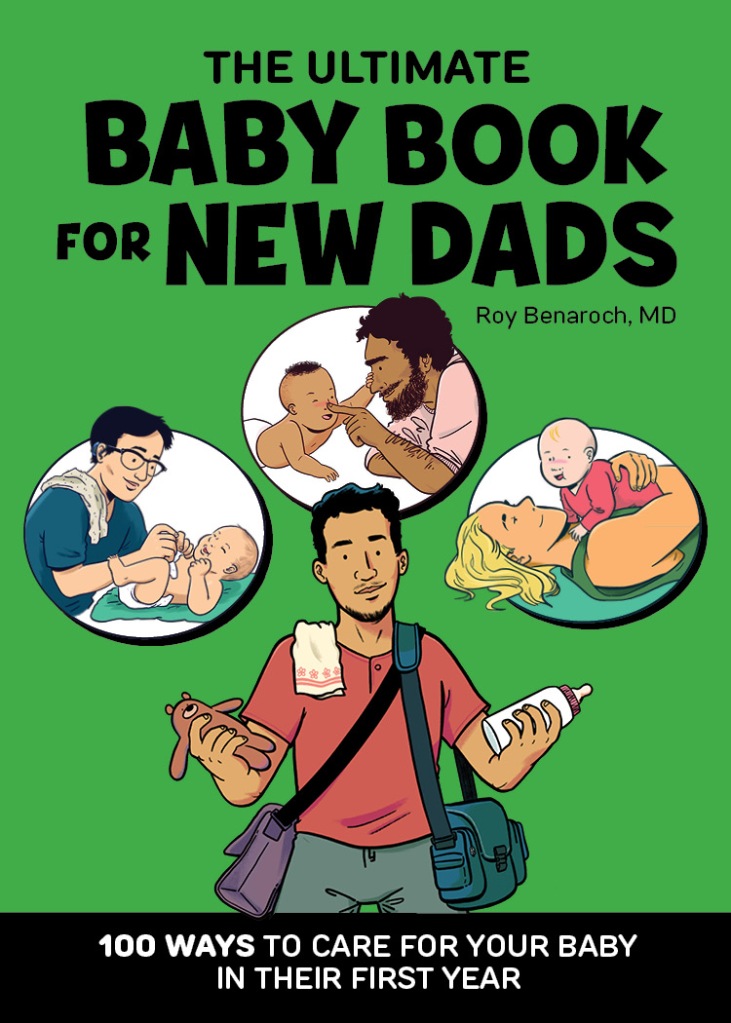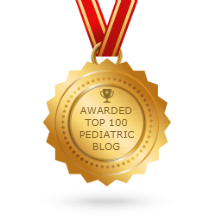© 2022 Roy Benaroch, MD
Shortages of infant formula? Really? I’ll bet that wasn’t on your “Pandemic Surprise Bingo Card”. Fortunately, almost all families needing formula should be able to find good substitute formula brands that will help their babies grow and thrive. You just have to push past all of the marketing terms and crazy labels that have made formula purchasing such a confusing mess.
First: This guide is for the vast majority of healthy, term babies. If your child has a rare metabolic disorder or severe allergies, you need more specific advice from your physician. Babies who are born prematurely may also have more-specific needs, at least for the first few months – ask your doc. For the rest of you, here’s the steps to take:
- Read the label of whatever you’re using now. The ONLY words and phrases that are important are “Milk-Based”, “Hypoallergenic”, and “Soy”. Your formula will only have one of these words. IGNORE ALL of the other words on the label.
- Go to the store or visit your favorite online shopping site. You may have to go to more than one. Buy whatever formula you can find that matches the word you found in step (1).
Yes, you can substitute any “milk-based” for any other “milk-based”; you can substitute any “hypoallergenic” or any other “hypoallergenic”; you can substitute any “soy” for any other “soy.” And next time you need to buy more, you can do this again. You do not have to stay on one brand of formula – in fact, you never did. Advice to never switch was just marketing to preserve market share, loyalty, and profits.
More details below. But honestly, now you know what you need to know. Go shop. Don’t worry.
The details
Though most of human history, babies were nursed, usually by their moms, and sometimes by paid or enslaved wet nurses. Still, many babies didn’t get enough good-quality nutrition. When people say, “Well, what did babies do before formula?”, the answer is “They died.” I will not tolerate any mom-shaming or formula-shaming here.
By the mid-1800s it was clear that babies unable to nurse well had very high mortality, despite families trying to feed them a variety of paps and mashes and milks. These substitutes all difficult to digest and provided inadequate nutrition.
There are significant problems with using ordinary cow’s, goat’s, or other animal milk as a human milk substitute. Apart from issues of disease transmission and purity, the protein quality and quantities are wrong, and there are inadequate vitamins and minerals to ensure healthy growth. Modern commercial formula is hygienic and provides all of the nutrition a growing baby needs.
It’s also a huge business with big profits. There are only four major baby formula manufacturers in the USA, and tariffs and regulatory burdens have supported what’s close to a monopoly. Tight federal regulations require exact amounts of all of the important ingredients in all baby formulas. The only things the manufacturers can change are minor added ingredients and the marketing claims on the labels. Very few of those words actually mean anything important to the health of your baby – they’re there only to attract market share.
It’s a myth that there’s something special about individual brands of baby formula, and there’s never been a compelling medical reason that says babies shouldn’t switch formulas or try different brands. These recommendations created a “mystique” about the power of certain baby formulas, and made formulas seem like prescription medications. Parents, it’s implied, need a doctor’s advice to know which to buy. (I guess there’s some ironic truth to that – there are so many choices and words on the label that choosing formula seems overwhelming.)
Now: babies, especially young babies and newborns, do have fussy times, and they spit up, and their poops change character and color. All of that is often blamed on a choice of formula. But here’s a Pediatric Insider Secret – it’s probably not the formula. It’s just normal changes and normal fussiness. But if you change formula, say, every 5-7 days, eventually you’ll get lucky or your baby will outgrow a fussy phase, and you’ll have several good days in a row. Was it the new formula that fixed the problem? Probably not, but you (and your pediatrician) will be fooled into becoming a super-loyal customer.
And that’s a problem when shortages loom for so many formula brands. You’ve been hoodwinked into thinking your baby needs a specific brand. But guess what? She probably doesn’t care, and her health will be fine with any appropriate substitute.
Marketing words
Here’s a list of words I found on some packages of baby formula powder. None of them mean anything medically important. Ignore all of them. Don’t let them fool you or scare you.
2’FL HMO
All in One
Brain building
Breast milk, or “closest to breast milk”, or any variation on that
Clinically tested
Colostrum
Comfort
Crying/Reduces crying/Less crying
DHA
Easy to digest
Expert recommended
Fussiness
Gas
Gentle
HMO
Immune health/Immune support
Lactoferrin
MFGM
Neuropro
Non GMO
Sensitive
Soothe
Spit up
Supplementing
A few other marketing words deserve more explanation:
Antireflux. Many formulas claim, with no evidence, to be better for spit up or fussiness. But some take this a step further, adding modified rice starch that thickens in the acidic environment of the stomach to make the formula thicken. The idea is that it’s less likely to be spit up, and there is even a little bit of evidence that it sometimes works. But the vast majority of spitty babies don’t care if they spit up, and there’s no health consequences of spitting up. So for most babies on these formulas, it’s fine to use ordinary milk-based formula too.
European. Formulas manufactured in Europe, or formulas made to European standards in the US, have a sort of magic cachet in some communities. They’re more expensive, so they must be better. I guess. But it’s just marketing, again. There are no health benefits to European formulas. Use it if you want – it’s your money – but if you have to substitute during a shortage, any milk-based formula will do.
Lactose reduced, or low lactose, or lactose sensitive. Lots of kids, teenagers, and adults are lactose intolerant. Your baby is not. Human breast milk is loaded with lactose, and virtually all human babies digest lactose just fine. Removing lactose from formula is another a marketing trick.
Organic. If you can afford it, and if you can choose organic formula and other products, that’s fine. But don’t fool yourself. Organic foods are not grown “chemical free” or more “naturally” – they just use different, organic fertilizers and pesticides. I know of no good, compelling, or reliable evidence that organic baby formula or organic anything else is more healthful for anyone. BTW, same for the phrase “Non-GMO” – no health differences at all. Just marketing.
Partially hydrolyzed. Hydrolyzation is a chemical process that breaks down proteins into smaller strands. “Fully hydrolyzed” infant formulas are truly hypoallergenic, and are necessary for babies with true food allergies. But most babies who are thought to be “intolerant” of certain formulas don’t actually have allergies at all. “Partially hydrolyzed” formulas try to sort of imply that they’re partially-sorta-kinda friendlier for kids who might have kinda-allergies. But there’s no evidence that they make any real difference to anyone. Again, marketing.
Important words
Milk-based. Almost all commercial baby formula is based on cow’s milk, which is then modified to make it suitable for human babies. If your baby is doing well on a milk-based formula, choose a different milk-based formula if your favorite brand is in short supply.
Buried on the labels of baby formula are a handful of words that do have specific and important meanings:
Soy, or “plant-based.” Some commercial formulas use soybeans as a milk base. These provide good nutrition and are a reasonable choice for families who wish to avoid cow’s milk, or for the (rare) babies who are genuinely allergic to cow’s milk but can tolerate soy. If your baby is doing well on a soy formula, choose a different soy formula if you need to.
Hypoallergenic. These formulas are also based on cow’s milk, but the proteins are fully hydrolyzed or broken down chemically to reduce allergic reactions. These formulas aren’t needed very often, but if your baby is on a hypoallergenic formula, you should substitute with another hypoallergic formula. If you cannot find one, talk with your baby’s doctor – some babies can safely switch back to ordinary formula, but you need your doctor’s input for that.
Amino-acid based. These are rare, very expensive formulas for babies with severe allergies. If your baby is on one of these you’ll know it. Don’t make changes without speaking with your doctor.
Generics and store brands
Almost all “store brand” or generic formula in the US is manufactured by Perrigo, using the same standards for nutrition and hygiene as the better-known brands. There are no important differences. Any generic or store brand is fine, and has always been fine, whether or not there’s a shortage of the more-expensive products. Often, the color or style of packaging of generics is designed to look like a name-brand product, but don’t worry about the look and colors – all that matters are those three words. Is it Milk-Based? Is it Hypoallergenic? Is it Soy? The rest is fluff.
Things not to do
Don’t make your own formula at home. You don’t have the right ingredients or expertise. These will not provide good nutrition. Bad things can happen.
Don’t water down or otherwise try to “stretch out” commercial baby formula powder. Bad things can happen.
Don’t use “Toddler Formula” for babies less than a year. Honestly, there’s very little reason to use it for children past their first birthday, either.
Don’t panic buy or hoard. We saw this with toilet paper and sanitizer in the pandemic. There was always plenty of both, but panic buying cleared out the shelves.
Things you should do
Shop around. Help and share with neighbors. Stay involved with moms’ groups to find stores with stocked shelves. Ask your pediatrician for samples (we have some, but we’re running low.) If your baby has weaned and you have unopened, leftover powder, donate it to a neighbor or through your pediatrician.
Feed your baby age-appropriate solids & complementary foods starting at 4-6 months. By 9 months a lot of your baby’s healthy diet will be food, not formula or milk. Good!
Swap to ordinary milk at 12 months. You don’t need “toddler formula” or anything else special after the first birthday. I’m not even sure you need milk at all, but that’s a topic for another post.
Support moms who are nursing, and support moms who are using formula. Be kind. Always.
























Recent Comments